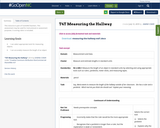
This resource is part of Tools4NCTeachers.
This assessment may be used for instructional or assessment purposes. A scoring rubric is included.
- Subject:
- Mathematics
- Material Type:
- Assessment
- Formative Assessment
- Date Added:
- 07/13/2019

This resource is part of Tools4NCTeachers.
This assessment may be used for instructional or assessment purposes. A scoring rubric is included.
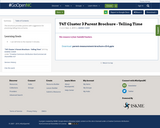
This brochure provides parents with suggestions for practicing telling time at home.
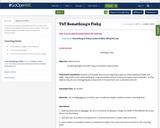
This resource is part of Tools4NCTeachers.
In this lesson, students read the book Fish Eyes by Lois Ehlert.
Then, they compare length and width using non-standard measurement.
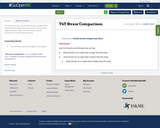
This resource is part of Tools4NCTeachers.
Students find objects that are longer than, shorter than, and the same length as a given straw. This task may be used for instructional or assessment purposes.

This resource is part of Tools4NCTeachers.
This file contains several tasks assessing standards OA.1 and MD.5. Each task is a separate attachment with its own materials and scoring rubric. This assessment may be used for instructional or assessment purposes.
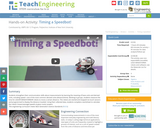
Students strengthen their communicate skills about measurements by learning the meaning of base units and derived units, including speed one of the most common derived units (distance/time). Working in groups, students measure the time for LEGO MINDSTORMS(TM) NXT robots to move a certain distance. The robots are started and stopped via touch sensors and programmed to display the distance traveled. Using their collected data, students complete a worksheet to calculate the robots' (mean/average) speeds at given motor powers.
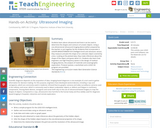
Students learn about ultrasound and how it can be used to determine the shapes and contours of unseen objects. Using a one-dimensional ultrasound imaging device (either prepared by the teacher or put together by the students) that incorporates a LEGO(TM) MINDSTORMS(TM) NXT intelligent brick and ultrasonic sensor, they measure and plot the shape of an unknown object covered by a box. Looking at the plotted data, they make inferences about the shape of the object and guess what it is. Students also learn how engineers use high-frequency waves in the design of medical imaging devices, the analysis of materials and oceanographic exploration. Pre/post quizzes, a worksheet and a LEGO rbt program are provided.
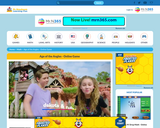
For this online interactive, students are shown an image of an angle and a protractor to find the measure of the highlighted angle.

Students compare the lengths of objects.
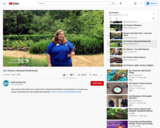
Join Leslie as she shows you a quick way to measure biodiversity in your backyard or any place you choose. Download your own biodiversity datasheet - https://tinyurl.com/NCZooBiodiversity
We have created a helpful clip if you're unable to watch the full video:
K.L.1 Recording Differences in Plants (1.5 min): https://youtu.be/WEsuRfGY7i0?t=173